NORTH WALES COAST RAILWAY:NOTICE BOARD
Rheilffordd arfordir gogledd Cymru: Hysbysfwrdd
02 April 2020
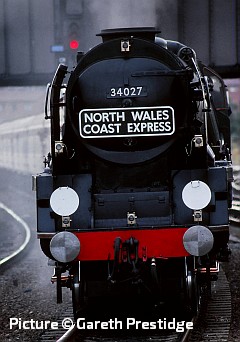
Forthcoming events
(see also our Calendar page for venues)
Note: we have removed all entries up to the end of May as the events are cancelled.
June 2020
Saturday 27 June Steam at Chester The Cheshireman (Railway Touring Company). 60163 London Euston - Chester and return.
July 2020
Sunday 19 July Steam on the Coast North Wales Coast Express (Railway Touring Company) LIverpool - Manchester - Holyhead (15:05 - 17:40).
Tuesday 21 July Steam on the Coast The Welsh Mountaineer (Railway Touring Company) Preston - Blaenau Ffestiniog and return
August 2020
September 2020
Saturday 5 September Steam at Chester 'The Cheshireman' (Railway Touring Company). Norwich to Chester. Loco 6233 for part of the journey.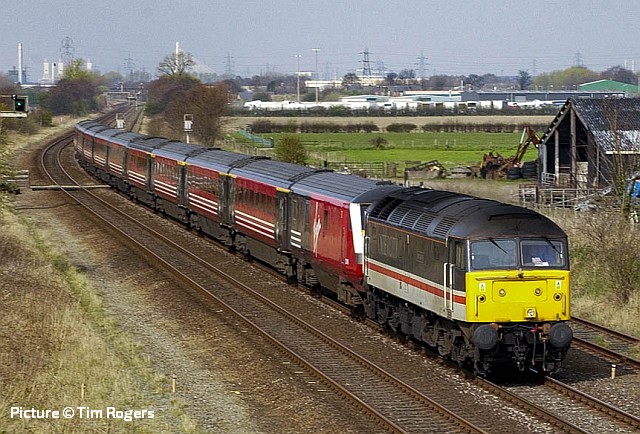
47 826 Springburn passing Sandycroft with a London train on 30 March 2002 (Tim Rogers).
An extra helping of 'looking back' as looking back is clearly very popular : the next update which should catch up with the all the great contributions received will be a day later than usual on the evening of Tuesday 5 April. Reminder: Images of the current scene are not encouraged in the current situation. - Charlie
The Holyhead Breakwater Railway - by David Pool
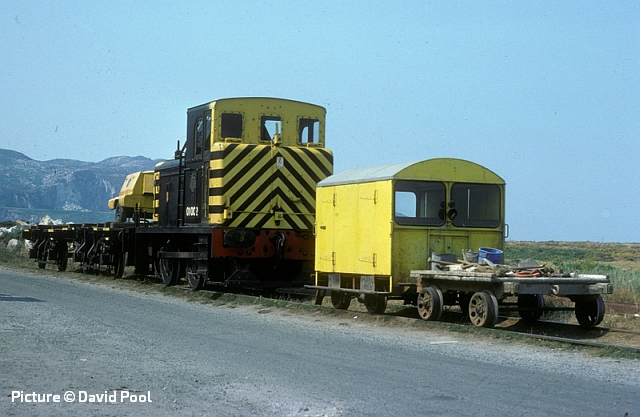
On my visits to Holyhead in the 70s I never saw any signs of activity on the Breakwater Railway – the locos were locked out of site in the shed. I was determined to see these elusive creatures before they were inevitably withdrawn, and one of my British Rail contacts offered to let me know when they were due to be working.
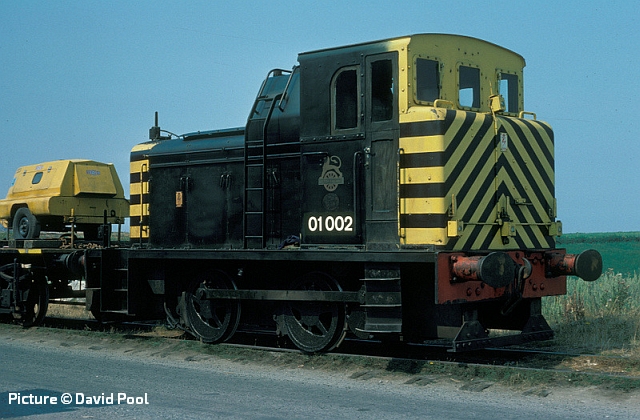
Eventually I got a message that there was planned activity on 11 August 1976, so I set off for Holyhead early that day. Sure enough, 01 002 was out of the shed, together with a flat wagon loaded with a Bristol compressor, and behind a Wickham trolley TR23.
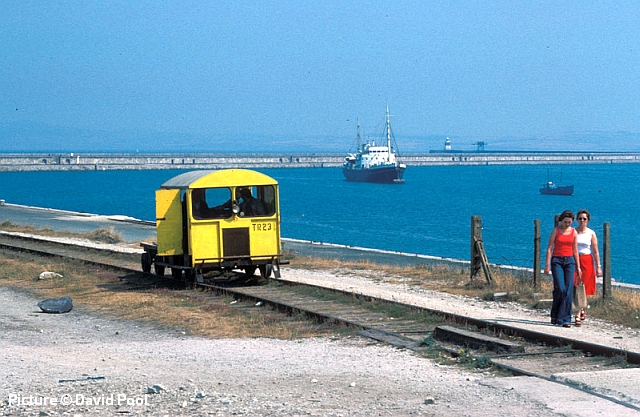
The Wickham trolley set off down the Breakwater and eventually returned ...
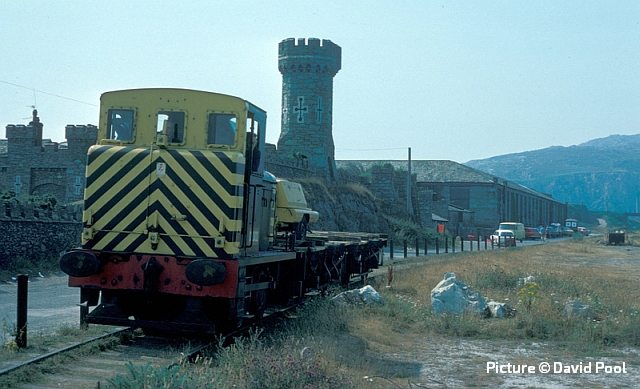
... at which time 01 002 moved off with the compressor.
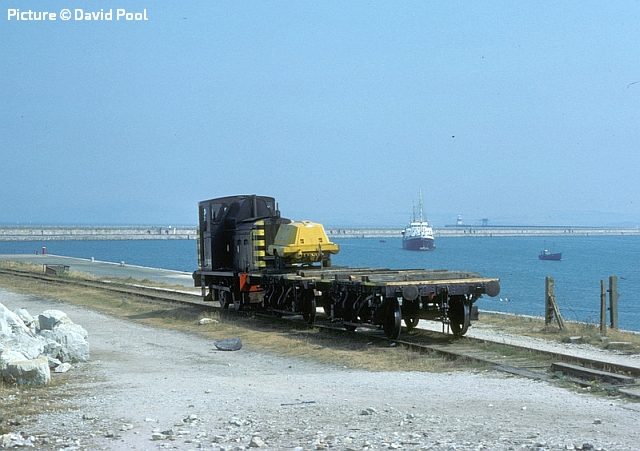
After a long walk ...
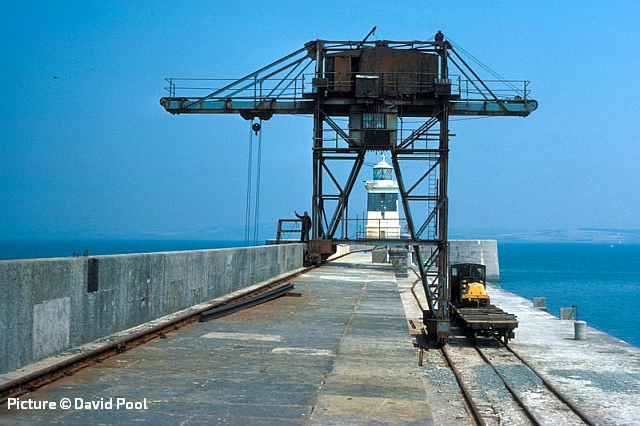
... I caught up with it near a travelling crane at the end of the Breakwater.
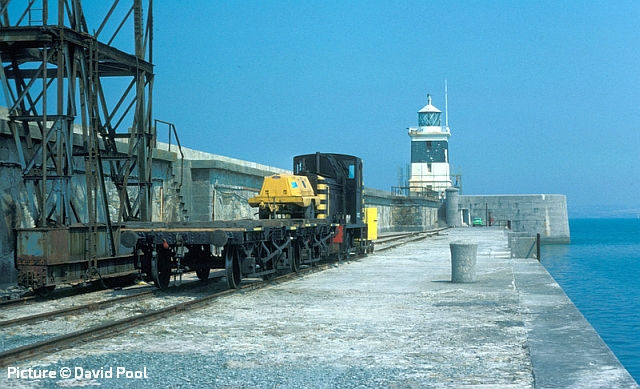
Some work was being carried out on the seaward side of the Breakwater, and I decide not to wait until 01 002 returned.
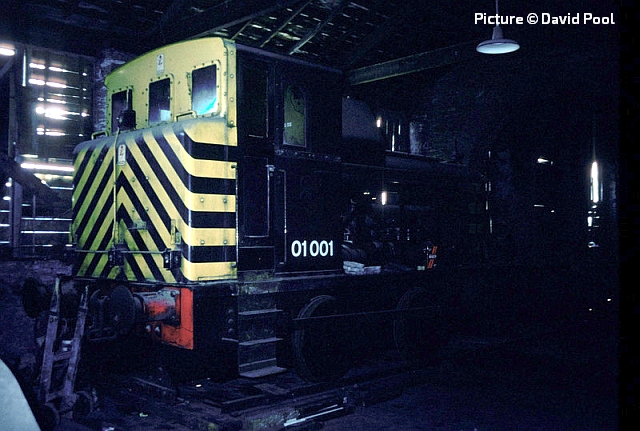
The remaining task was for me to see if any photo of 01 001 was possible. A black locomotive in an unlit shed presented problems with no flash, but I couldn’t complain after such a successful day!
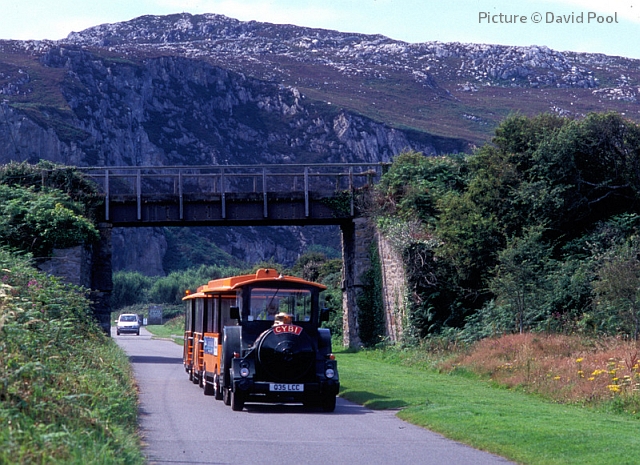
Thirty-six years later I returned to Holyhead, this time to photograph the “Land Train” which ran between the Promenade and the new Breakwater Country Park, the latter being the site of the quarry which supplied the stone for the Breakwater. The road followed the course of the railway between the loco shed and the quarry.
As a postscript, I recently bought a Bachmann model of a Wickham trolley. Its number was TR23.
[The train Q35 LCC has since moved to Stirling, Scotland, replaced at Holyhead by one hauled by a Land Rover.- C.H.]
From Dave Sallery's archive
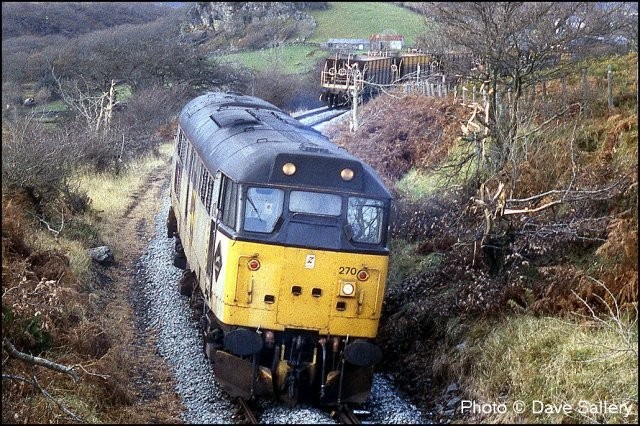
31 270 on reballasting duties on the Trawsfynydd branch, 4 November 1993. The train was top and tailed from Blaenau. On the return journey, as the ballast was dropped, the rear loco followed at a respectable distance.
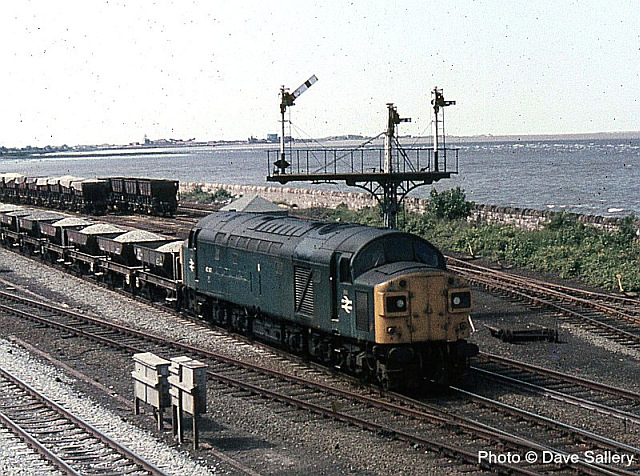
2 July 1984, 40 143 on Up ballast from Penmaenmawr at Mostyn. The sheeted hopper wagons in the background carried imported sulphur to the Octel plant at Amlwch.
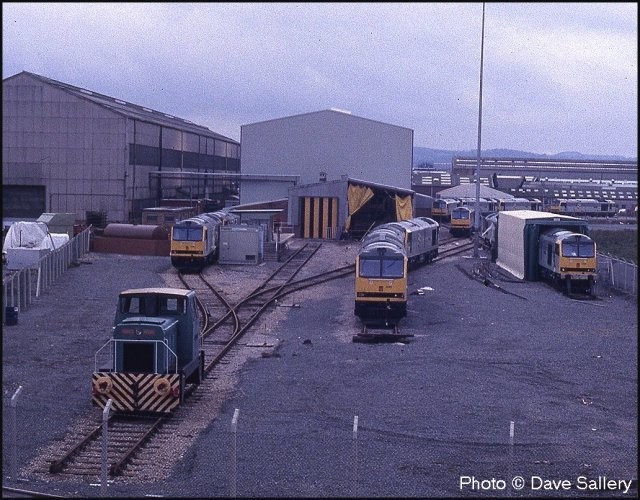
Looking over the fence at Brush, Loughborough. At least 12 new Class 60s are in view. 27 October 1990.
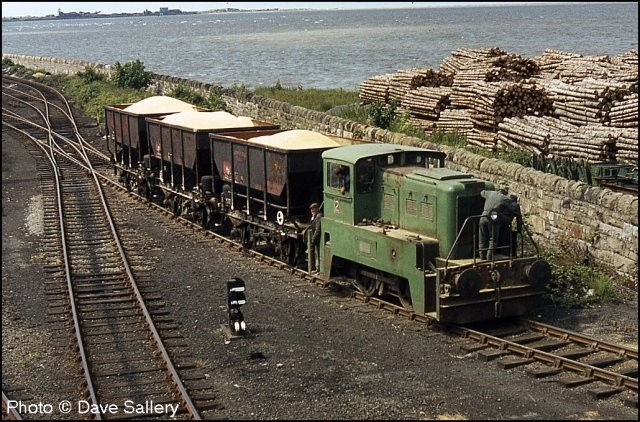
2 July 1984. Mostyn docks No. 2 is backing loaded sulphur wagons out of the docks into the yard. There they will be sheeted over and formed into a trainload for Associated Octel, Amlwch.
Errata
The picture of the purple Deltic in ther last issue was by David Wood and not as first given.
This week in 2002 - pictures by Tim Rogers (Part 2)
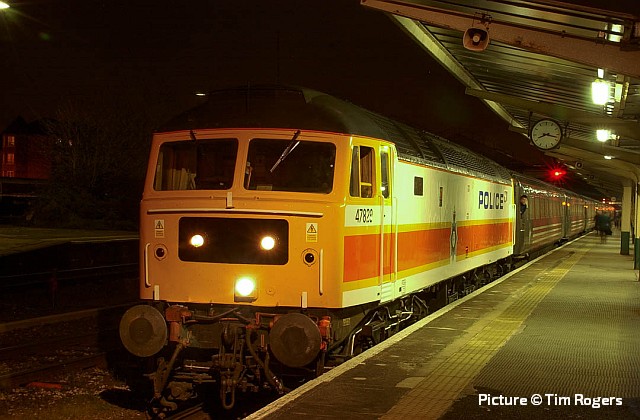
Chester, 27 March 2002. 47 829, which had gained the strange livery for a safety campaign, working the Crewe to Holyhead section of the evening train from London.
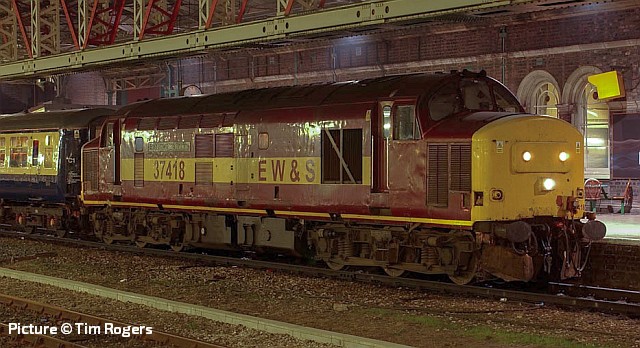
37 418 East Lancashire Railway calls at Chester, taking time out from its Cardiff - Rhymney duty to work between Cardiff and Crewe, one of a number of loco-hauled trains on that route at the time. Recently, it has been back on the Rhymney line filling in for late-delivered Class 769 units.
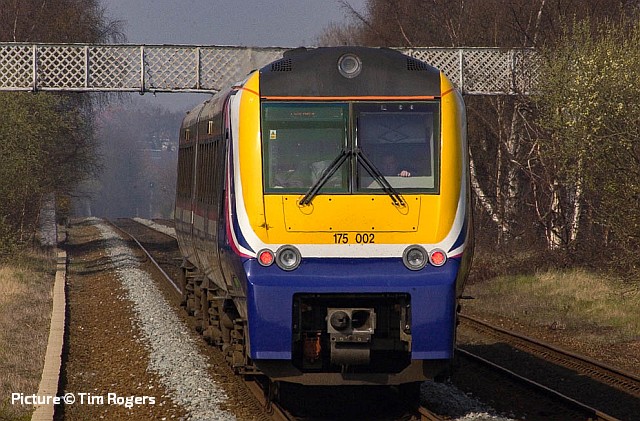
29 Mar 2002, Shotton Low Level. 175 002 is the 10:17 Crewe to Bangor
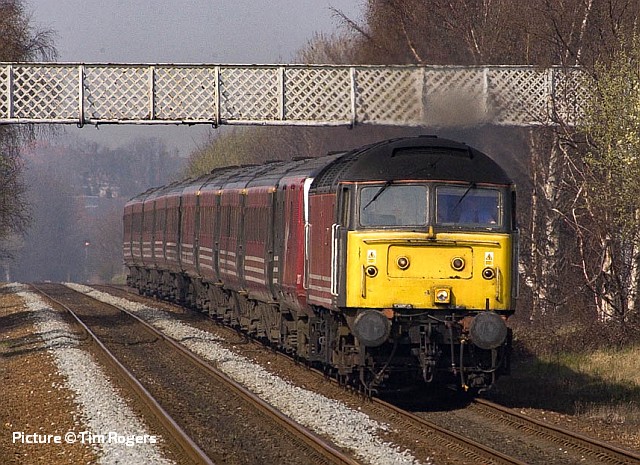
47 814 Totnes Castle on 1A46 09:19 Holyhead to Euston.
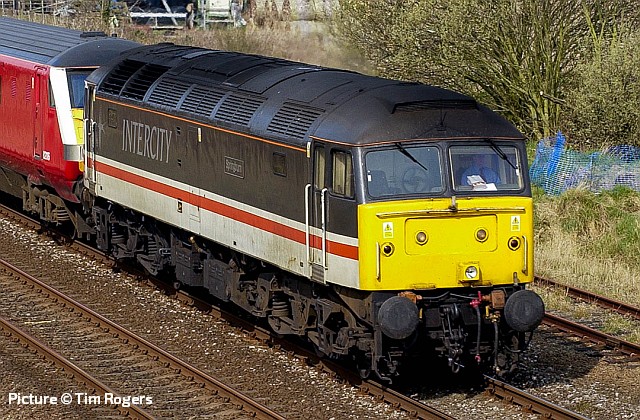
30 Mar 2002, Sandycroft. 47 826 Springburn on 1A39 09:19 Holyhead to Euston.
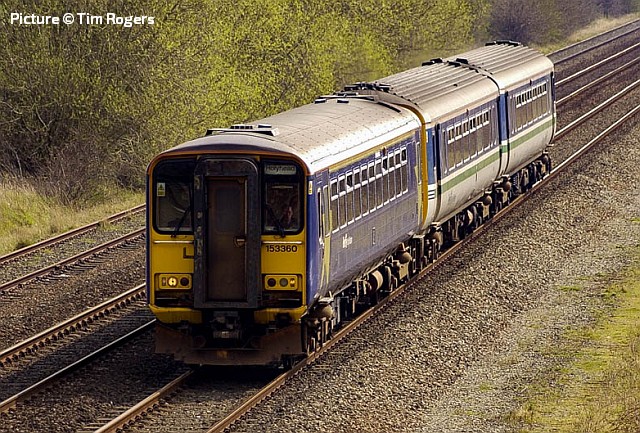
First North Western 153 360 and 156 459 are 10:02 Manchester Piccadilly to Holyhead.
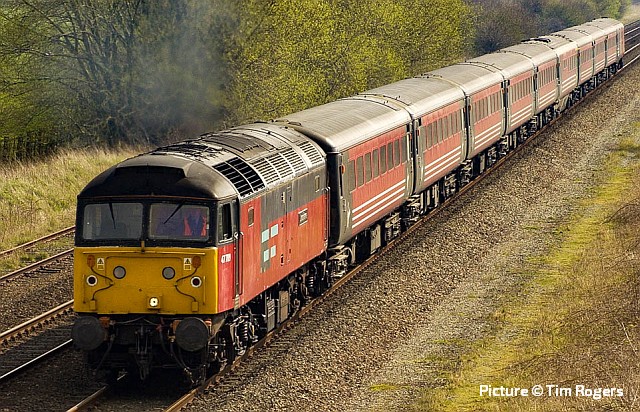
47 789 Lindisfarne 1D87 07:20 Euston to Holyhead.
North Wales Coast Express c. 1989 - pictures by Gareth Prestidge
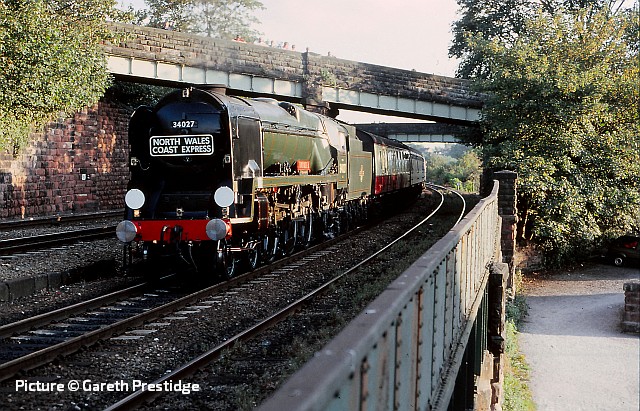
1989 was a a good year for steam fans, when British Rail ran a series of 'North Wales Coast Express' excursions along the North Wales line in the summer, using a variety of locomotives. Above, 34027 Taw Valley heading out of Chester.
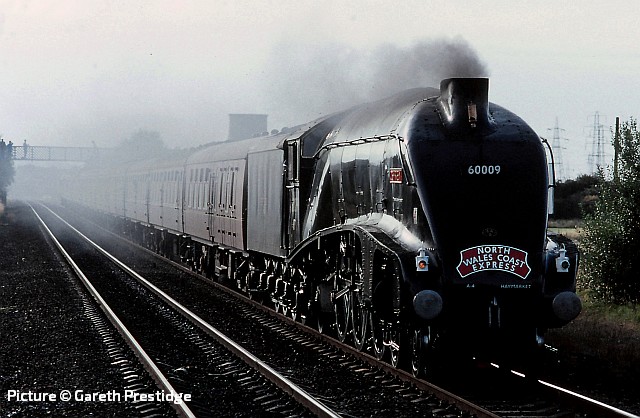
A4 pacific 60009, running as Osprey as the name Union of South Africa was thought to have political implications at the time .
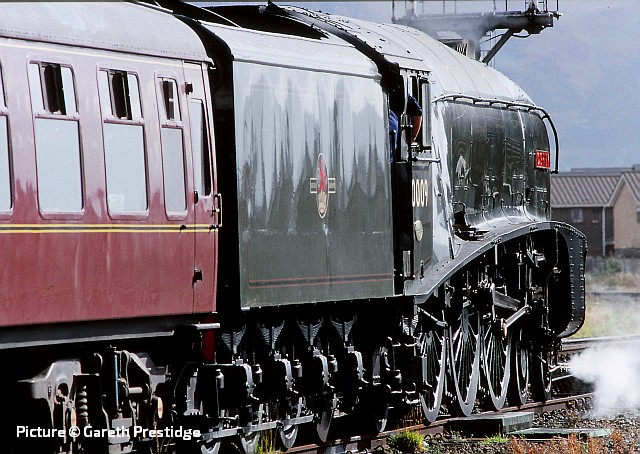
Parry's Railway Companion - revisited by Geraint
Rowlands
Many readers will no doubt be familiar with Bradshaw's Railway Handbook, as used by Michael Portillo on his TV travels. In the early days of travelling by rail, there were a number of similar titles being written, aimed at the new traveller. One such volume was written by Edward Parry, a native of Chester. First published in 1848, its title page describes it as "containing a descriptive and historical account of all objects of interest that present themselves on this beautifully picturesque line; especially the monster tubular bridges across the river Conway and the Menai Straits, and the herculean harbour of refuge at Holyhead".
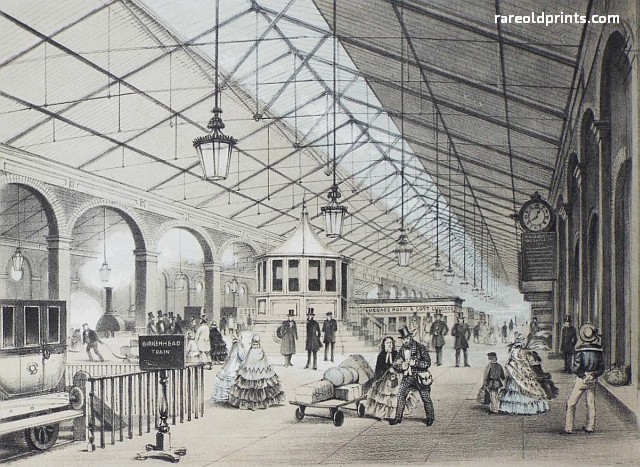
Here is an extract, describing the station in Chester:
This grand central terminus station for all the lines meeting at Chester—the London and North Western—the Chester and Holyhead—the Shrewsbury and Chester—and the Birkenhead Lancashire and Cheshire Junction Railways,—was designed by Mr. Thompson, the celebrated architect, of London, who planned the Derby station. It is admirably adapted for the purpose of developing all those facilities and conveniences which are the characteristics of the railway system. The station consists of a facade facing the city of Chester, 1010 feet long, built of dark-coloured
fire-bricks, relieved with stone facings and dressings. The centre of this building, which is two stories in height, contains, on the ground floor, the usual offices, waiting and refreshment rooms; and, on the upper floor, offices for the general station committee, and for the Chester & Holyhead and the Shrewsbury & Chester Companies, in which the business connected with the whole of their lines is conducted. The number of offices and rooms exceed fifty.
The wings are formed by projecting arcades, with iron roofs, and are appropriated to private and public vehicles, waiting the arrival of trains. On the inner side of the office buildings, a large platform extends, which is chiefly used for departing trains, and is 740 feet long by 20 feet wide; this and three lines of rails are covered by an iron roof, 60 feet in span, designed by Mr. Wylde, C.E. which is one of the most elegant yet constructed; and us the height of the walls on which it rests is 24 feet from the platform, the whole shed has a very imposing effect. Behind this shed, and only divided from it by a series of pillars and arches, is a shed for spare carriages, 600 feet long by 52 feet wide, also covered with a beautifully constructed iron roof. There are likewise two sheds for arrival trains, each 290 feet long by 24 feet broad, in a line with the office buildings, and filling the space between the arrival shed and the shed for vehicles. The full extent of the passenger station, from the carriage landing at the east end to the one at the west end, is 1160 feet.
This noble building is an object of considerable attraction. It occupies a space of ground a quarter of a mile in length. The design is remarkable for its beauty and grandeur of proportion. Much praise is due to Mr. Brassey, the spirited contractor, for the workmanlike and expeditious manner in which he has accomplished this stupendous edifice; the foundation stone of which was laid in August, 1847, and on the 1st of August, 1848, it was opened for traffic. The length of the line immediately connected with the passenger station is about 15,000 feet, with 36 turn tables, and numerous points and crossings. Great credit is due to R. L. Jones, Esq. the committee's secretary and general manager, who superintended the entire work during its progress, suggesting and causing such alterations to be made as he deemed necessary for the general comfort and convenience of the public.
Behind stands the Goods Station, a substantial red and blue brick building, consisting of a shed 180 feet long and 120 feet wide, with four railway and two cart entrances, at either end, and one railway entrance in front. It is covered by two large roofs, supported down the centre of the building by cast-iron columns and girders, and lighted by two skylights, each 175 feet long and 14 feet wide. The new bridge is of handsome design, built by Messrs. E. L. Betts and Son, with brick and stone, consisting of six girder and fifteen brick arches; the latter of which are converted into stabling, and the side of the branch leading down to the Goods Station into cattle landings. It is 1040 feet long, and 30 feet wide within the battlements. There are also four semaphore light-houses, gas-works, a spacious reservoir, &c. The total cost was above £220,000.
North Wales Coast home page | Archive | Previous Notice Board